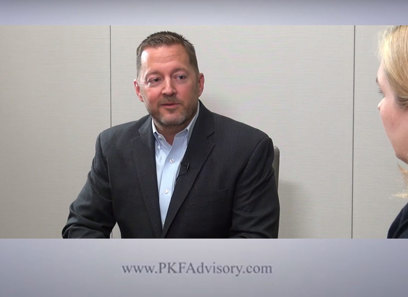Future-Proof Your Organization: Secret Cybersecurity Forecasts You Need to Know
As organizations confront the accelerating pace of digital improvement, comprehending the advancing landscape of cybersecurity is essential for lasting strength. Forecasts suggest a substantial uptick in AI-driven cyber hazards, alongside enhanced regulatory scrutiny and the imperative shift towards Zero Depend on Design. To efficiently navigate these challenges, companies should reassess their safety methods and foster a society of awareness amongst workers. However, the effects of these adjustments prolong beyond plain compliance; they might redefine the extremely framework of your functional safety. What steps should firms require to not only adapt but thrive in this brand-new atmosphere?
Surge of AI-Driven Cyber Hazards

One of the most worrying developments is the use of AI in developing deepfakes and phishing schemes that are incredibly convincing. Cybercriminals can produce audio and video material, impersonating executives or relied on people, to control sufferers into revealing sensitive details or authorizing fraudulent transactions. Furthermore, AI-driven malware can adapt in real-time to escape detection by standard safety and security steps.
Organizations must recognize the urgent requirement to bolster their cybersecurity frameworks to fight these advancing dangers. This consists of investing in sophisticated danger detection systems, fostering a culture of cybersecurity recognition, and applying durable event action plans. As the landscape of cyber threats transforms, positive actions become important for safeguarding sensitive information and keeping service integrity in a progressively electronic globe.
Enhanced Concentrate On Data Personal Privacy
Exactly how can organizations successfully browse the growing focus on information privacy in today's digital landscape? As regulatory structures advance and consumer assumptions rise, organizations should prioritize robust information privacy methods.
Spending in employee training is critical, as personnel understanding straight affects information defense. Additionally, leveraging technology to improve information safety is vital.
Cooperation with lawful and IT teams is essential to line up information personal privacy initiatives with company goals. Organizations needs to additionally involve with stakeholders, including customers, to connect their commitment to data personal privacy transparently. By proactively addressing information personal privacy issues, businesses can develop trust fund and boost their reputation, inevitably adding to long-term success in a significantly scrutinized electronic atmosphere.
The Change to Zero Trust Design
In response to the progressing threat landscape, companies are significantly taking on No Trust fund Style (ZTA) as a fundamental cybersecurity technique. This method is based on the principle of "never trust, always verify," which mandates continual verification of individual identities, gadgets, and information, no matter of their place within or outside the network boundary.
Transitioning to ZTA includes applying identity and accessibility management (IAM) remedies, micro-segmentation, and least-privilege accessibility controls. By granularly controlling access to resources, companies can mitigate the risk of expert hazards and reduce the influence of external This Site breaches. Moreover, ZTA incorporates durable surveillance and analytics capabilities, permitting organizations to identify and reply to anomalies in real-time.

The shift to ZTA is additionally sustained by the raising adoption of cloud solutions and remote job, which have actually expanded the assault surface (cyber resilience). Standard perimeter-based safety and security models want in this brand-new landscape, making ZTA a more resilient and flexible structure
As cyber risks remain to grow in refinement, the fostering of No Depend on concepts will be important for organizations looking for to safeguard their properties and keep regulatory compliance while making sure company connection in an unclear environment.
Regulative Adjustments coming up

Upcoming regulations are anticipated to attend to a variety of issues, consisting of information privacy, violation notice, and event reaction protocols. The General Data Protection Regulation (GDPR) in Europe has actually established a criterion, and similar structures are emerging in various other regions, such as the United States with the recommended government personal privacy regulations. These policies commonly impose stringent fines for non-compliance, highlighting the requirement for companies to prioritize their cybersecurity steps.
Additionally, sectors such as finance, health care, and essential framework are most likely to deal with more stringent demands, showing the delicate nature of the data they take care of. Compliance will my blog certainly not merely be a lawful commitment however an important component of building count on with consumers and stakeholders. Organizations must stay ahead of these modifications, integrating regulatory requirements right into their cybersecurity methods to make sure resilience and secure their properties properly.
Importance of Cybersecurity Training
Why is cybersecurity training a crucial element of an organization's protection strategy? In a period where cyber hazards are increasingly advanced, look at here organizations need to acknowledge that their staff members are frequently the very first line of defense. Effective cybersecurity training furnishes personnel with the knowledge to determine prospective hazards, such as phishing assaults, malware, and social design strategies.
By fostering a culture of protection understanding, companies can dramatically lower the threat of human error, which is a leading source of data breaches. Regular training sessions guarantee that staff members stay notified about the current risks and best practices, consequently boosting their capability to react appropriately to cases.
Moreover, cybersecurity training advertises conformity with regulatory needs, decreasing the danger of legal consequences and financial fines. It additionally encourages employees to take ownership of their function in the organization's security structure, causing a proactive instead of reactive technique to cybersecurity.
Conclusion
In conclusion, the developing landscape of cybersecurity needs positive procedures to deal with emerging hazards. The increase of AI-driven strikes, paired with increased data privacy concerns and the transition to Zero Depend on Architecture, necessitates a thorough technique to safety and security. Organizations needs to stay vigilant in adjusting to governing adjustments while focusing on cybersecurity training for personnel (cybersecurity and privacy advisory). Emphasizing these approaches will not just enhance business resilience yet likewise safeguard delicate information versus an increasingly innovative array of cyber hazards.